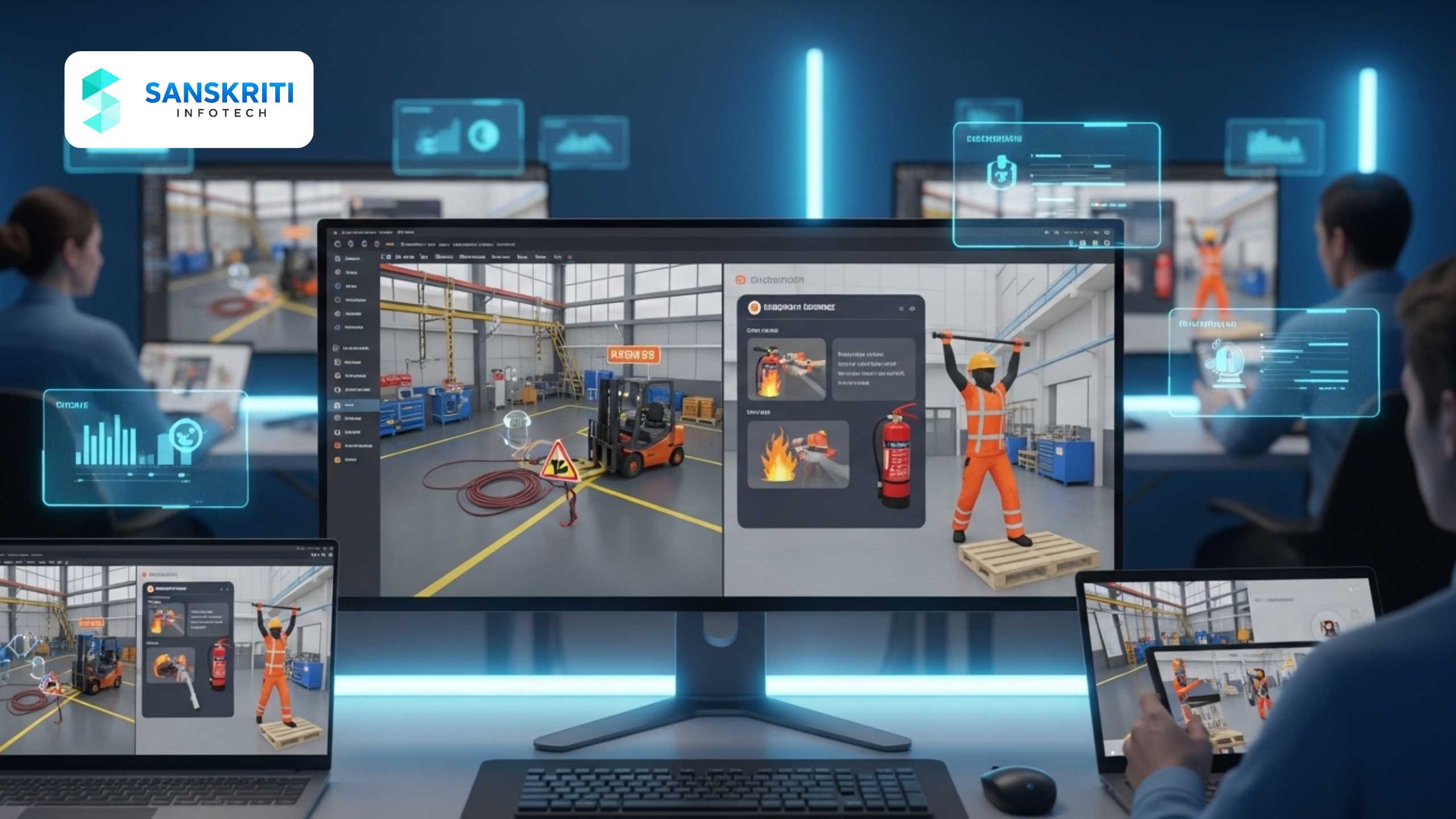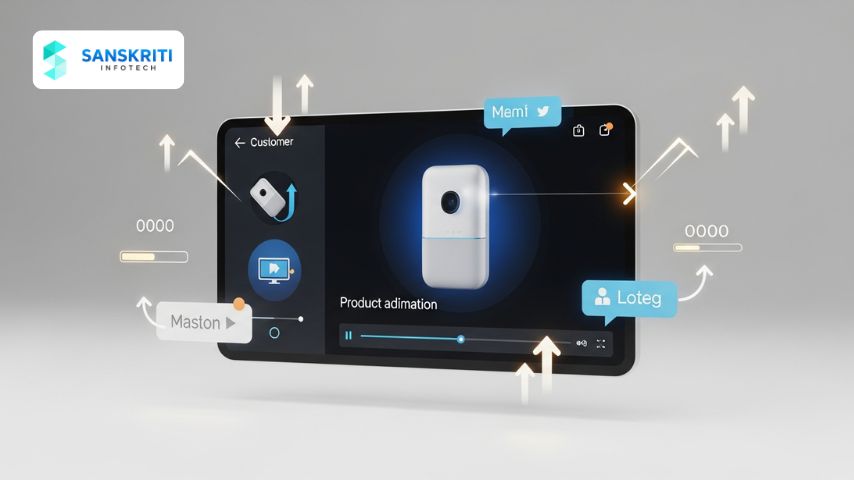Table of Contents
Introduction
In today’s digital-first world, online safety training courses have become a cornerstone of workplace education. Whether it’s for compliance, onboarding, or continuous development, companies rely on eLearning to deliver essential safety knowledge to their workforce. Yet, despite its widespread adoption, traditional eLearning often falls short. It’s static, one-size-fits-all, and most importantly—forgettable.
Enter 3D animation. With its immersive visuals, dynamic storytelling, and spatial interactivity, 3D animated safety training is redefining how businesses educate employees. This blog explores how 3D animation transforms generic safety modules into effective, engaging, and high-retention learning experiences that actually stick.
Traditional Online Safety Courses: What’s Missing?
The evolution from classroom training to digital courses was a necessary step. But the current state of online safety training is often uninspiring. Most modules are PowerPoint-style slides, voiceover narrations, or outdated stock footage, with little room for contextual understanding.
Here are some common issues:
- Over-reliance on text and static images
- Lack of real-world visualization
- Passive consumption without interaction
- Generic content not tailored to specific industries or job roles
- Poor retention due to cognitive overload or boredom
For industries with high-risk environments like manufacturing, oil & gas, and construction, this isn’t just inefficient—it’s dangerous.
The Rise of 3D Animation in Safety Training
3D animation addresses every shortcoming of traditional training formats. It adds depth, realism, and interaction. Employees no longer need to imagine hazards—they can see them play out in controlled environments.
Benefits include:
- Visualizing complex machinery, processes, and workflows
- Demonstrating real-time cause-and-effect for safety incidents
- Customizing for specific worksites, equipment, and teams
- Accelerating learning through visual memory
- Supporting multilingual and literacy-diverse teams
According to NIOSH, retention rates for visual and interactive learning can be as high as 80%, compared to just 10% for reading or lectures.
How 3D Animation Enhances Key Training Modules
Let’s explore how 3D animation brings common safety training topics to life:
- Emergency Response: Simulate fire drills, chemical leaks, or machinery malfunctions so teams learn correct responses.
- Lockout/Tagout (LOTO): Show exactly how and where to secure equipment with real-world tools and placements.
- Hazard Identification: Teach employees to spot hazards in dynamic, cluttered environments instead of flat illustrations.
- PPE Training: Demonstrate how to properly wear, check, and remove safety gear in different settings.
- Worksite Walkthroughs: Give new employees a guided 3D tour of the facility, pointing out high-risk zones and safe paths.
Every scenario becomes more engaging and memorable when learners see themselves reflected in the animation.
Microlearning: Small Modules, Big Impact
Modern learners want content that’s mobile, relevant, and to the point. 3D microlearning delivers this:
- Short videos (1–3 minutes) covering one key topic
- Interactive decision points (“What would you do next?”)
- Instant feedback and recap animations
- Gamified quizzes with animated feedback loops
According to Safeopedia, microlearning also reduces cognitive overload and lets employees learn at their own pace—perfect for busy production floors or remote sites.
Commercial ROI: Why 3D Animation Makes Business Sense
3D animation isn’t just a learning upgrade—it’s a business investment. Clients who’ve adopted 3D animated training have reported:
- Up to 60% reduction in onboarding and certification time
- 45% fewer safety violations or incidents post-training
- Improved audit scores and regulatory compliance
- Greater consistency in training across multi-site operations
Additionally, these courses can be reused, repurposed, and updated easily, offering long-term value compared to instructor-led training or basic eLearning modules. See more insights on EHS Today’s ROI benchmarks.
Building Effective 3D-Animated Safety Courses
To create training that delivers, follow this strategic roadmap:
- Assess Training Needs: Identify high-risk tasks, recurring incidents, or processes that are hard to explain with static media.
- Script Real-Life Scenarios: Keep content grounded in actual work conditions and site-specific hazards.
- Design for Interactivity: Incorporate clickable elements, branching decisions, and real-time feedback.
- Use Diverse Characters and Voices: Make content inclusive across gender, language, and roles.
- Integrate with LMS: Ensure content is SCORM/xAPI compliant for easy tracking and deployment.
Bonus tip: Involve frontline supervisors in content review—they know what’s practical, relatable, and likely to be accepted by employees.
Real-World Examples of 3D Safety Training in Action
- Oil & Gas Operator: Reduced permit-to-work violations by 40% by simulating confined space entry procedures.
- Pharmaceutical Plant: Used 3D walkthroughs to replace printed SOP manuals—reducing errors by 25%.
- Construction Company: Created animated fall-protection modules with decision trees—used across 15 project sites.
The versatility of 3D content makes it valuable across all departments—HR, EHS, Operations, and even contractors.
Conclusion
Training should do more than check boxes—it should change behavior. With 3D animation, safety training becomes a story employees remember, a process they understand, and a culture they internalize.
If you’re ready to modernize your safety training and see real impact on compliance, productivity, and risk mitigation, 3D animation is the way forward. At Sanskriti Infotech, we create tailored 3D safety training courses for every industry, every site, and every team.






